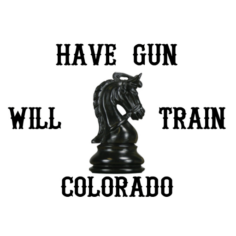 Greg Ellifritz (Active Response Training) told a story in a recent post of a man who had all the lingo of a good gun handler, had all the top equipment, but in an actual self-defense moment when he had to perform he became a basket case. The Concealed Carry Podcast also recently talked about the eighty-twenty handgun training principal and gave some indication of what they felt were important and not so important training issues. It has been shown that 80% of what we worry about or focus on does not help us achieve the 20% that’s important. This concept is known as the Pareto Rule.
Greg Ellifritz (Active Response Training) told a story in a recent post of a man who had all the lingo of a good gun handler, had all the top equipment, but in an actual self-defense moment when he had to perform he became a basket case. The Concealed Carry Podcast also recently talked about the eighty-twenty handgun training principal and gave some indication of what they felt were important and not so important training issues. It has been shown that 80% of what we worry about or focus on does not help us achieve the 20% that’s important. This concept is known as the Pareto Rule.
Many people in the Concealed Carry community spend 80% of their time worrying about their equipment (Guns, Lights, Lasers, and toys). Gear matters a lot less than you might think. If we develop skills, gear becomes even less important. It’s funny how we tend to worry about the things that are not important. We need to focus on the things that count. I remember a saying my dad use to tell my youngest daughter. He would say worry in sequence. I wonder if this isn’t the same concept.
So I’m going to put four items or skills in the 20% column and let’s look at them.
GRIP– a grip needs to be consistent, putting a lot of flesh on the gun. This will also mitigate recoil and its obvious problems.
TRIGGER CONTROL-trigger control is different for different types of triggers. Single action triggers get the pad of the index finger only. Double action triggers use more of the finger normally all the way to the power crease or the crease in the first joint of the index finger.
AIMING-aiming relates to sighted fire and unsighted fire. Knowing how to use both and when to use each is an important skill.
DRAW FROM THE HOLSTER– draw from the holster is a book all by itself. Most people believe that you must learn the strong side belt holster technique and then move to other types of holsters and carry positions. Proper holster technique is essential both for safety and for the ability to smoothly access your handgun in adverse situations.
Some skills will not be listed in the 20% because they are considered to be secondary skills. Not necessarily advanced but not as important as the four primary skills.
STANCE- one of the reasons this is not a 20% skill is that a proper stance is stable and comfortable. You do not know how or where you will be standing in a self-defense situation. You need to learn to shoot from many positions.
MAGAZINE DRILLS-loading and unloading under stress is important for several reasons but stats show that most self-defense situations end in 3 rounds or less. Most altercations happen at a distance of fewer than 3 yards, are over in approximately 3 seconds or less, and have 3 or fewer shots fired. (3-3-3)
Eighty-Twenty Handgun Training Principal
Other skills that may be important after the 20% is mastered.
MALFUNCTION DRILLS-while you may think of this as a primary skill it is really an advanced skill. Sure you need to know how to get your gun back into the fight if it isn’t working, but all the other skills have to be in place before this is important.
STRONG SIDE and WEAK HAND SHOOTING– while this skill is obviously important it is way down the list of things you should be training for.
You should have a baseline for your shooting ability. In other words a measurement of where your skills are today. Then thru out your training, you should go back and see that your baseline has moved, hopefully for the better. Here is a good baseline drill provided by Claude Werner (The Tactical Professor).
This is what it comes down to. You have to learn to effectively and efficiently handle your firearm. From the holster and presentation to shots on target. To do that your 20% skills have to be mastered. As you become more experienced you can start to throw additional skills into the mix (i.e. week hand shooting and malfunction drills). Find a gun that fits you. Learn to function the gun safely and efficiently. Learn to draw your firearm smoothly from the holster and put shots on target at respectable self-defense distances. That’s the eighty-twenty handgun training principal in a nutshell.
Other Articles that may be of interest:
Concealed Carry Permit Renewal
Concealed Handgun Definition in Colorado
Intervention With a Concealed Handgun
Having a Sound Self Defense Strategy
Learn To Shoot
